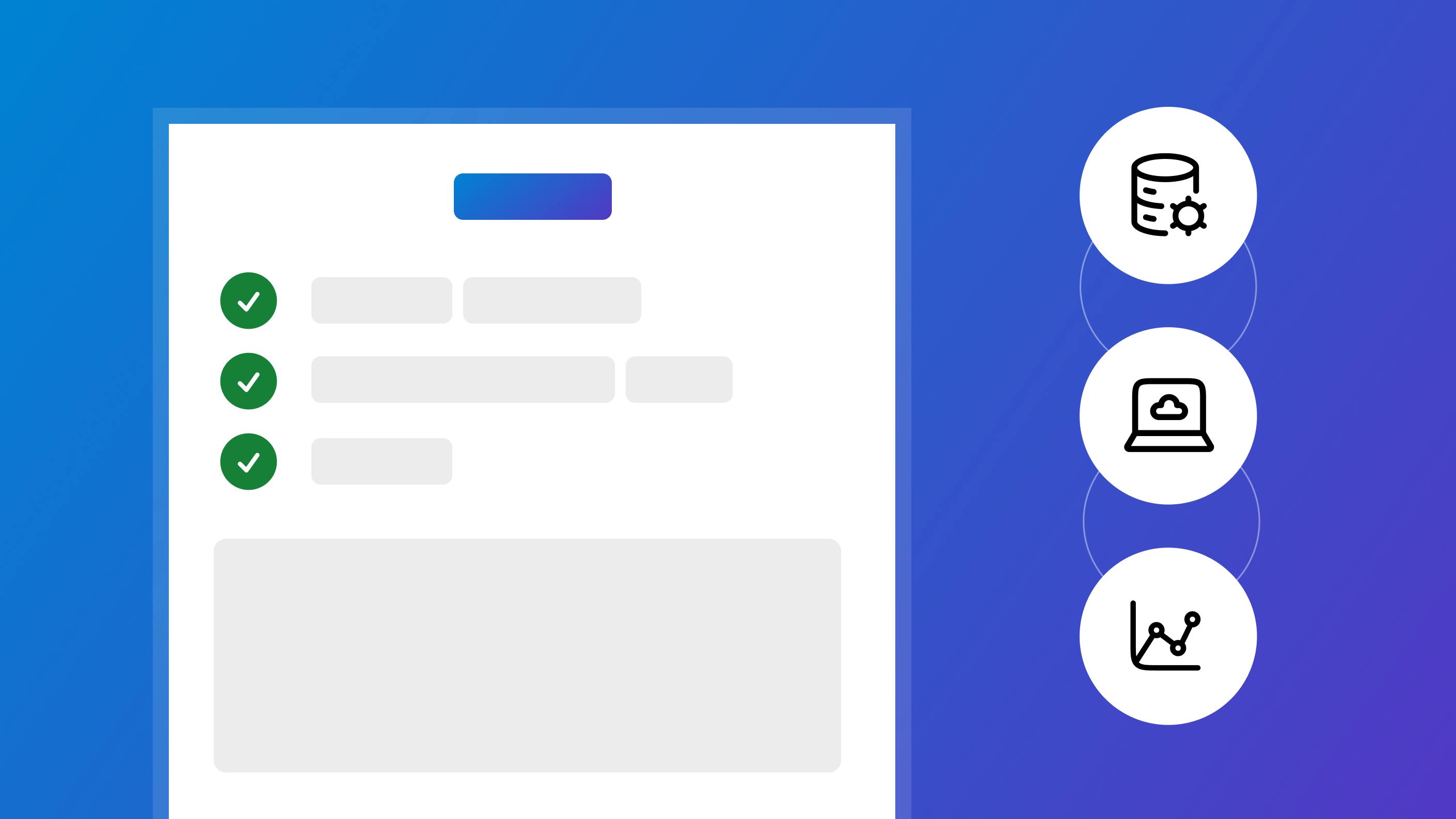Technology (IT) procurement is the process of identifying, acquiring, and implementing technology that aligns with an organization's operational and strategic goals. More than just purchasing software or hardware, it encompasses the evaluation, negotiation, deployment, and optimization of technology systems across a business.
For example, imagine a mid-sized company preparing to replace its CRM system. The procurement team collaborates with sales, marketing, IT, and finance to define their needs, issue an RFP, evaluate vendor responses, and roll out of the new platform, all while ensuring the solution integrates with existing workflows and delivers measurable ROI.
IT procurement typically falls into three categories:
- Services: Engaging third-party providers for IT services, such as cloud hosting or managed cybersecurity.
- Indirect procurement: Acquiring internal tools like productivity software or communication platforms.
- Direct procurement: Buying technology needed for the company's core offering, such as a SaaS provider acquiring backend infrastructure
This guide outlines every step of the IT procurement process, highlights best practices, calls out common pitfalls, and shows how platforms like Responsive can support smarter, faster procurement.
Factors to consider in the tech (IT) procurement process
As discussed in "A Guide to RFP Evaluation Criteria: Basics, Tips, and Examples", a structured, repeatable process dramatically improves vendor outcomes, ROI, and stakeholder satisfaction.
Here are the eight factors to consider in every tech (IT) procurement process:
Identify and assess organizational needs
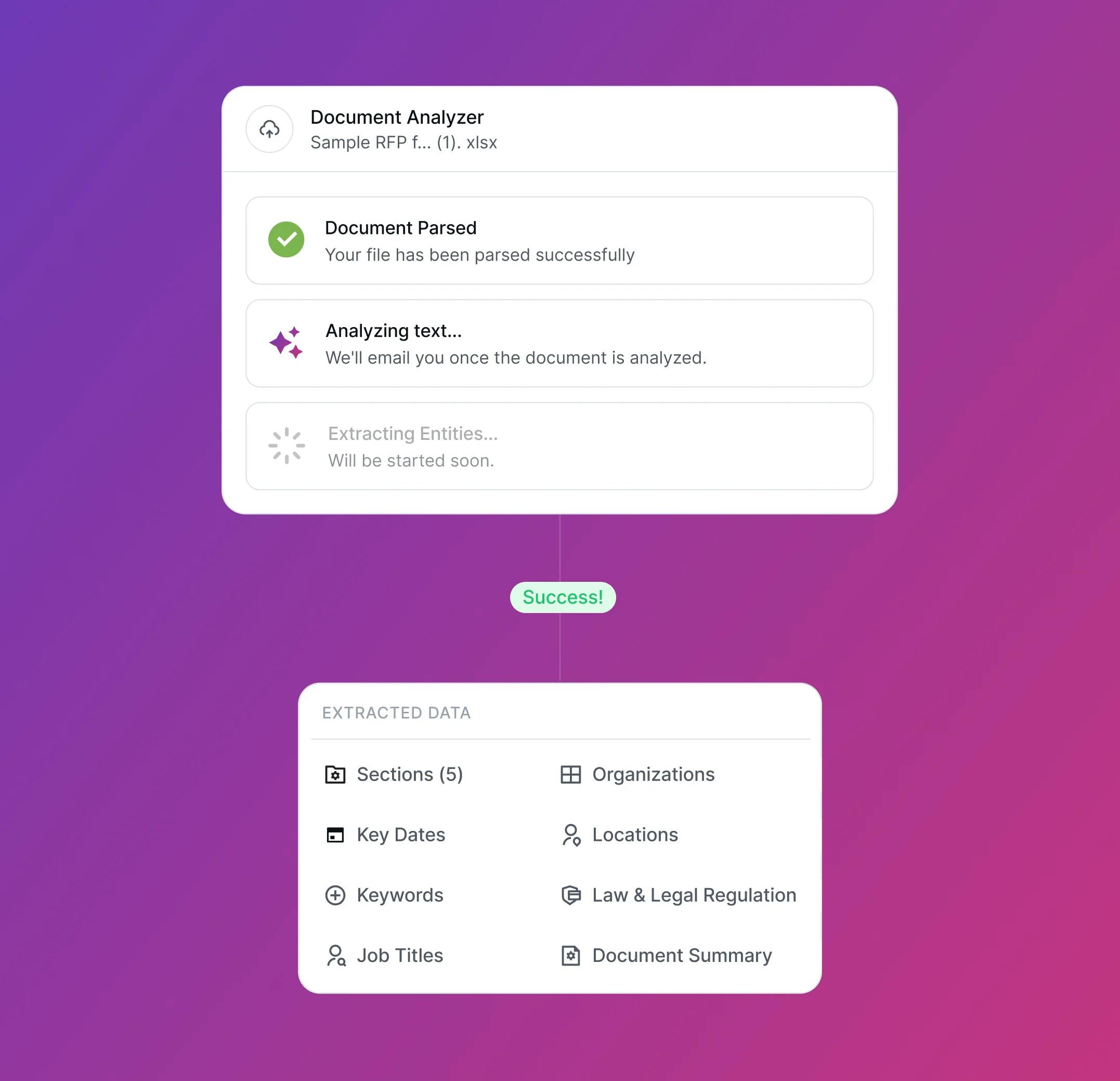
Strong IT procurement starts with understanding exactly what your organization needs and why. This means connecting early with department heads, end users, and IT stakeholders to clarify business goals, identify existing challenges, and establish clear success metrics. When teams skip this step or rush through it, procurement efforts often stall because requirements remain unclear or expectations differ across departments.
Responsive's Requirements Analysis simplifies the process of gathering and organizing input from multiple contributors. Teams can document key use cases, compliance requirements, and performance benchmarks from the start, creating a shared foundation that guides the entire procurement process. This thorough discovery phase prevents scope changes, enables better vendor comparisons, and keeps everyone aligned through implementation.
Conduct product research
After identifying needs, teams should explore the market for potential solutions. Draw from multiple sources — examples include analyst reports, peer recommendations, vendor webinars, and customer case studies. Look beyond features to consider integration capabilities, user experience, and vendor stability.
Responsive LookUp lets stakeholders tap into internal knowledge from past evaluations, accelerating research and maintaining consistency. Including IT and end-user representatives helps your short list reflect both technical requirements and practical usability. Comprehensive research at this stage saves time later and reduces the risk of selecting a tool that doesn't meet your needs.
Issue information requests or bids
Creating formal requests through an RFI, RFP, or RFQ gives vendors the structure they need to provide targeted proposals and helps you compare options fairly. Clearly state your objectives, technical and functional requirements, budget, timeline, and evaluation criteria. Including legal and security questionnaires now can also simplify later review stages.
To help with this, Responsive Request Projects offers pre-built templates and collaborative workflows to standardize outbound RFx documents. Centralizing this work maintains consistency, saves time, and prevents version control issues. Procurement leaders should coordinate responses across departments while keeping evaluation status and deadlines transparent.
Evaluate potential vendors
Vendor evaluation marks a critical decision point where strong documentation proves its value. Apply a weighted scoring rubric based on your established criteria to compare responses, verify claims during demos, and gather stakeholder feedback. Now's the time to check references, evaluate scalability, and confirm compliance with internal policies.
Responsive enables teams to review proposals collaboratively, track comments, and manage scorecard data in one place. This keeps the process transparent and eliminates the silos and manual coordination that slow decisions. Including representatives from finance, IT, and user groups provides an opportunity for all perspectives to inform the final vendor selection.
Negotiate contract terms
Contract negotiation extends beyond pricing to address data handling, uptime SLAs, implementation support, renewal terms, and exit clauses. Involve legal, procurement, and finance leaders early to avoid redlining delays later. Without careful planning, this phase can add weeks or months to your timeline.
Responsive Content Library lets teams quickly access pre-approved legal language, speeding up the redline process and maintaining consistency across vendors. Collaborative contract workflows also reduce risk by documenting approvals and preserving context for key terms. Structured negotiation minimizes ambiguity, strengthens vendor relationships, and creates a smoother path to implementation.
Implement new systems
Moving from signed contract to live deployment demands careful orchestration. A dedicated project owner should take the lead, coordinating between your vendor, internal teams, and stakeholders to hit each go-live milestone. While technical setup gets most of the attention, change management deserves equal focus because it's what drives user adoption and minimizes pushback. Teams that align early on data migration needs, training schedules, and support resources set themselves up for smooth launches rather than last-minute scrambles.
A phased rollout strategy works best, building in regular feedback checkpoints and backup plans for unexpected issues. Responsive users often pair detailed project checklists with clear stakeholder documentation, ensuring everyone knows their responsibilities and timelines. Remember that implementation success hinges on more than vendor performance — your internal team's preparation and buy-in ultimately determine whether the new system thrives or struggles.
Measure ROI
Real procurement success emerges in the months after signing. Teams should compare original objectives against actual outcomes: usage rates, user satisfaction, support ticket trends, and business impact. Without structured review cycles, even successful implementations risk becoming underutilized.
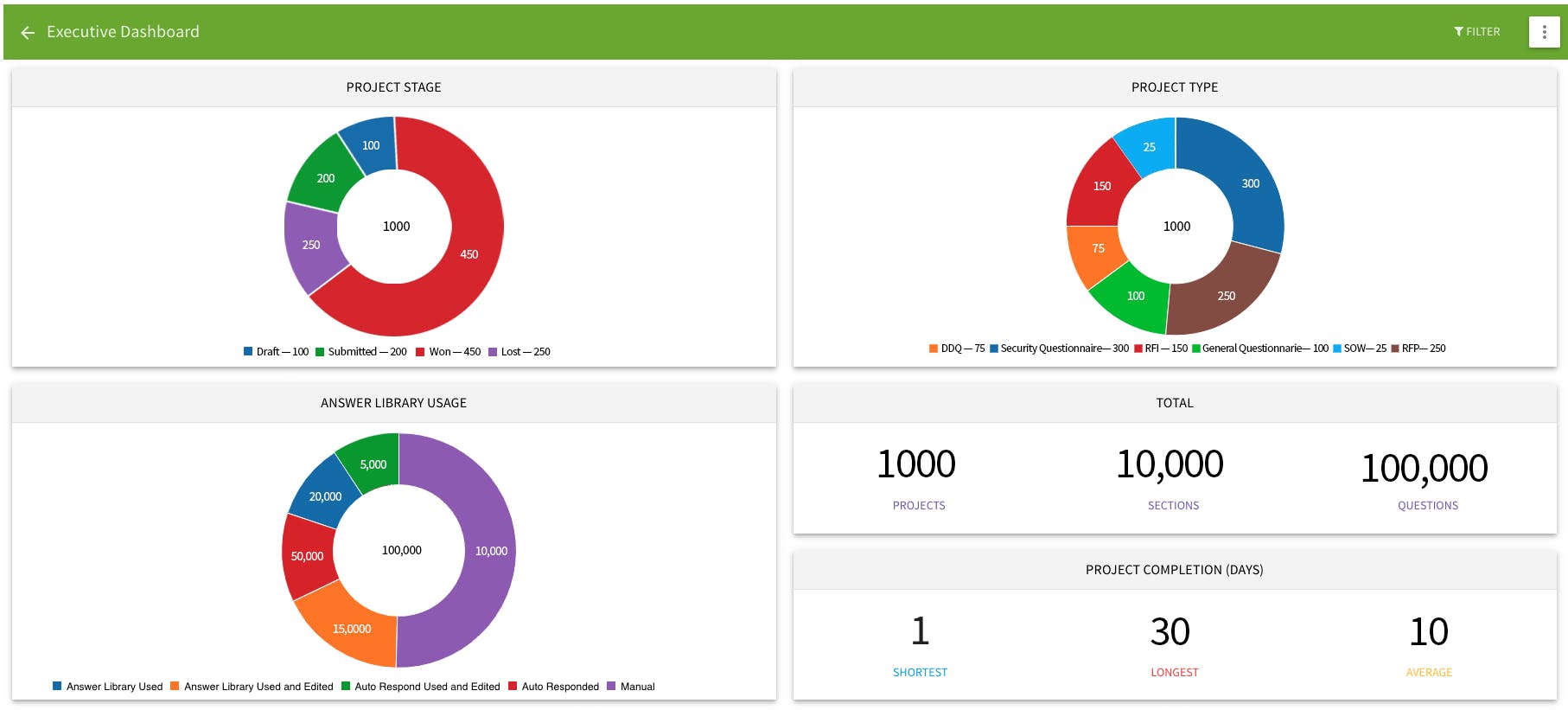
To help avoid this, schedule ROI assessments at 30, 90, and 180 days post-implementation. Responsive reporting tools help teams quantify outcomes and apply those insights to future procurement cycles. When business, IT, and procurement teams jointly own post-mortems, organizations capture learnings and act on them. This practice drives long-term value and continuous improvement.
Best practices for improving IT procurement
There are things your team can do to go above and beyond the eight procurement process factors shared above. These best practices include:
Establish a procurement team
Building a cross-functional procurement team sets up projects for success from day one. Rather than relying on a single buyer, bring together representatives from IT, legal, finance, compliance, and the end users who will work with the tool daily. This diversity provides broad coverage and prevents blind spots.
Assign clear roles: one person manages timelines, another handles contracts, and another leads internal communication. Document decisions and maintain shared accountability. Responsive supports this structure through granular roles and permissions, comment threads, and task assignments all in one workspace for procurement teams.
Consider TCO to balance cost and value
Upfront pricing is just one part of the picture. A lower-cost solution may require more IT maintenance, longer onboarding, or costly add-ons that inflate its long-term impact. Total cost of ownership (TCO) models help teams factor in licensing, implementation, support, training, and eventual migration costs.
A Gartner study shows organizations that implement steps to improve procurement operations see a 42% higher success rate in procurement transformation initiatives over those that don't. Responsive helps support these efforts by enabling teams to track historical pricing, licensing structures, and vendor scope details — all vital for accurate TCO comparisons. Teams that prioritize long-term value over short-term savings consistently make better decisions.
Prioritize scalability
Your needs today won't match tomorrow's requirements. That's why scalability deserves central consideration in your evaluation. Seek platforms with flexible licensing models, integration ecosystems, strong uptime records, and proven expansion stories. Ask vendors directly about customer success across different team sizes and geographies.
Scalability also means internal readiness. Can your team support the tool at 5x usage? Are permissions and integrations ready for increased complexity? Responsive provides the visibility to assess readiness and structure decision-making around future growth.
Leverage AI and machine learning
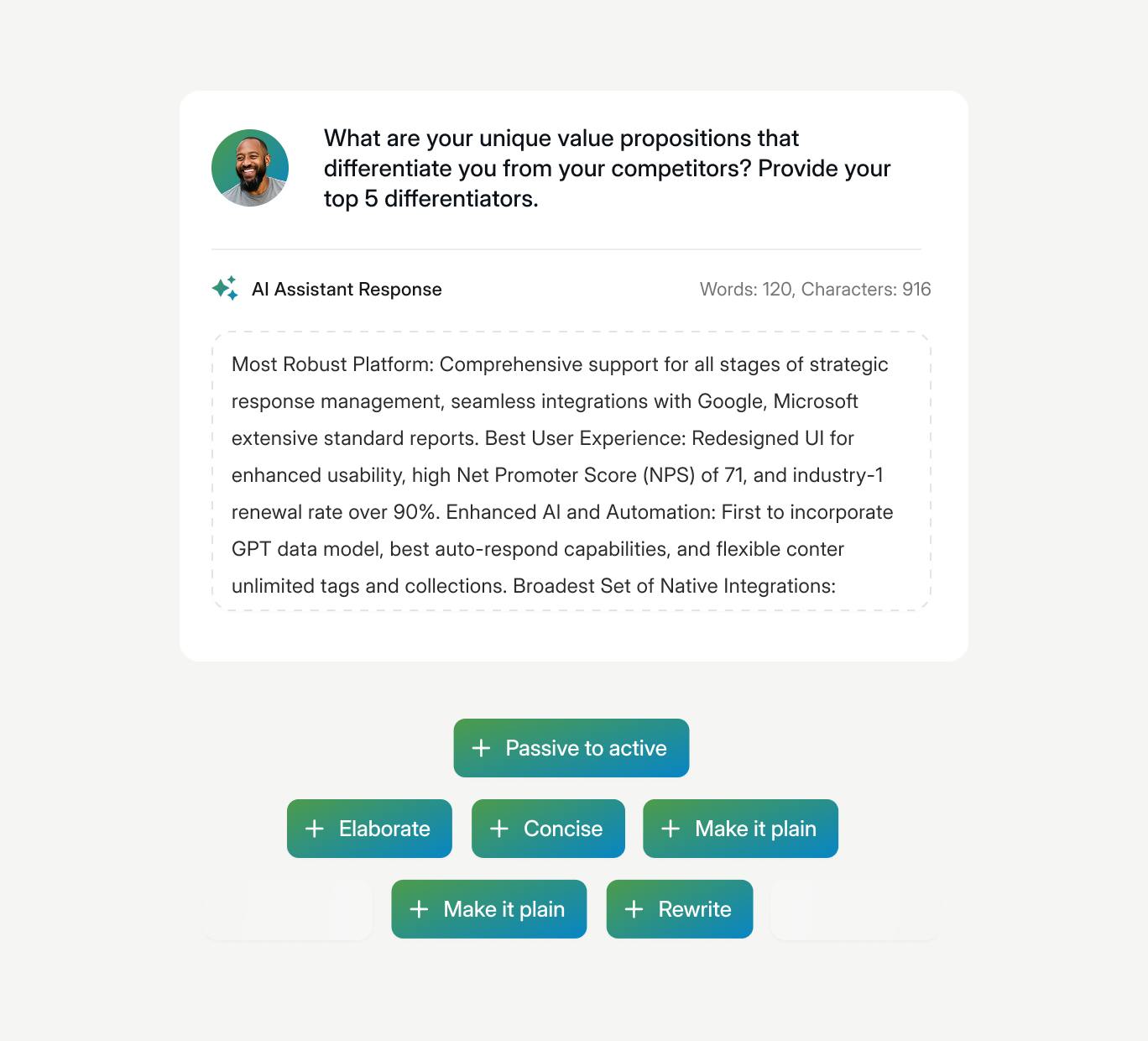
AI has become an indispensable tool in IT procurement. It enables teams to automate repetitive tasks, suggest improvements, and surface content from historical responses without sacrificing quality or governance. Responsive AI Assistant does exactly that, helping teams scale intelligently.
Forrester's 2025 RFP Automation Brief reports that teams using AI reduced turnaround time by 44% and improved internal satisfaction by 30%. Responsive AI capabilities extend across research, authoring, editing, and compliance, helping teams move quickly without cutting corners.
Invest in purpose-built procurement software
Generic tools like spreadsheets and email threads introduce delays, errors, and frustration. Procurement software should unify teams, automate low-value work, and integrate with systems your team already uses. Responsive supports Microsoft 365, Salesforce, Google Docs, and Slack so teams maintain their workflow while staying aligned.
Beyond issuing RFPs, Responsive centralizes content, tracks progress, manages timelines, and creates audit-ready records. This reduces cycle times, improves accuracy, and provides the collaboration environment that modern procurement demands.
Obstacles & risks in IT procurement
Early warning signs of procurement failure
Procurement challenges rarely appear suddenly. Instead, they build gradually through small missteps and misalignment. Warning signs often emerge when RFPs launch without clear evaluation criteria or when stakeholders like legal and finance join only after vendor selection. Without early involvement from the right people, critical issues around budget, compliance, or risk management remain unaddressed until they become expensive problems.
Other early indicators include unclear ownership around implementation, requirements that shift mid-process, and minimal input from actual system users. These breakdowns slow procurement and result in solutions that see poor adoption or miss business goals entirely.
Gartner found that 60% of failed IT purchases traced back to incomplete needs assessments or vendor mismatches. Similarly, Bloomberg discovered a case where delayed procurement of a cybersecurity platform led to a $14 million loss for a major healthcare provider.
Responsive helps organizations identify these issues before they escalate. Intake workflows capture stakeholder input from the beginning, timeline management features provide visibility into every phase, and built-in audit trails keep decision-making transparent and accountable. With Responsive, procurement leaders can detect risks early, realign teams quickly, and ensure every purchase delivers real, lasting value.
Risks of inefficient procurement processes
An unstructured or reactive procurement process creates lasting negative consequences. The most immediate impact appears as wasted time and underutilized technology, either because the tool doesn't meet actual needs or because teams weren't prepared for adoption. When procurement focuses solely on cost or speed without broader operational input, the resulting tools often sit idle or require expensive consulting to address functional gaps.
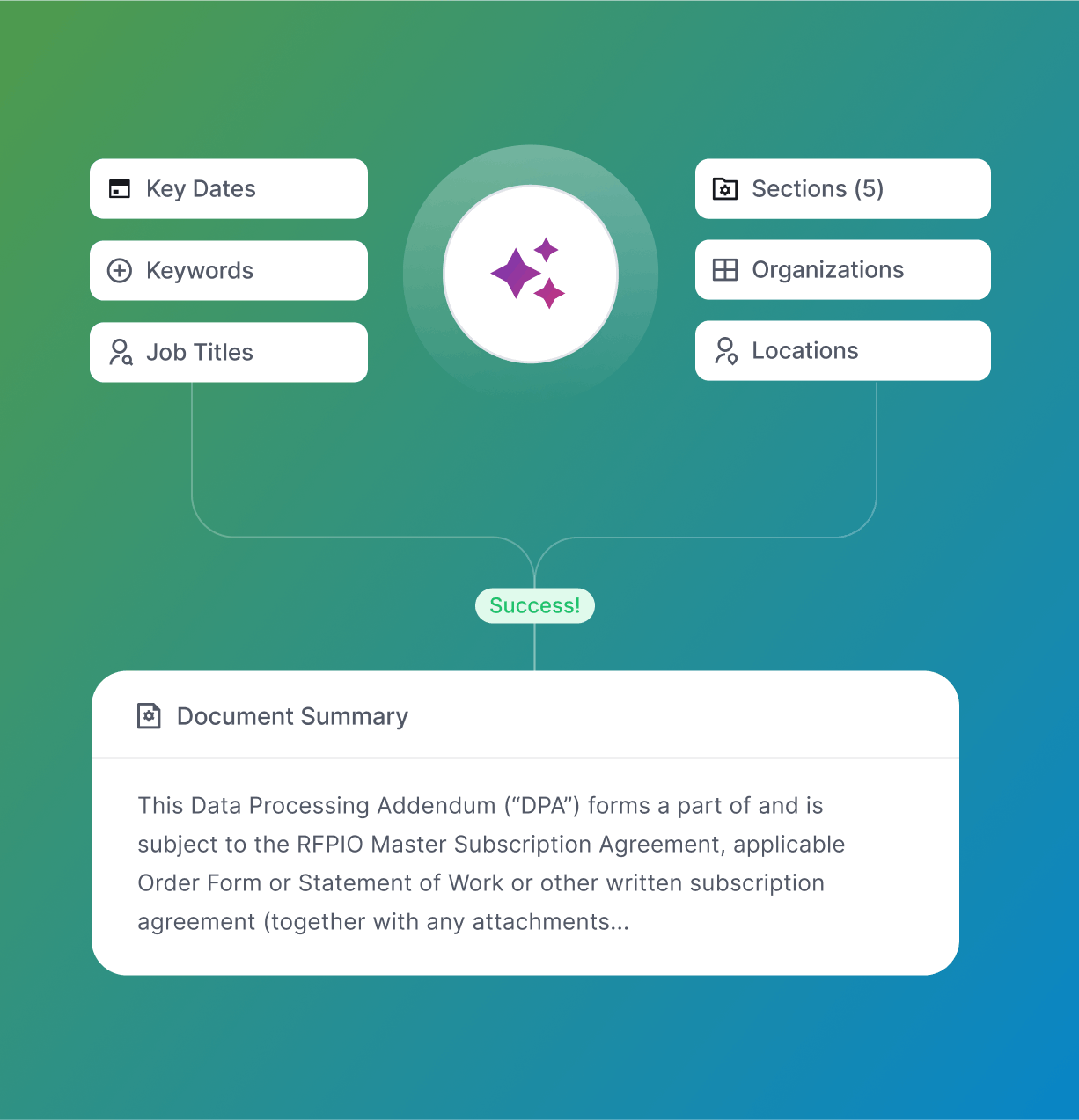
Poor compliance practices represent another important risk. Without consistent documentation, approved language, and internal checkpoints, organizations expose themselves to security, regulatory, and legal vulnerabilities. A missed indemnity clause, an unvetted third-party integration, or a late-stage redline from legal can cost far more than a delayed launch. Responsive’s built-in audit trails and content reuse features mitigate these risks by centralizing review cycles and reducing dependency on institutional knowledge or siloed spreadsheets.
How structure leads to operational efficiency
A well-structured procurement strategy benefits operational efficiency by simplifying the process, increasing speed, improving adoption, and reducing long-term cost. Teams that centralize intake and align on scope early achieve on-time launches and successful onboarding far more often. Organizations using structured intake tools like Responsive’s Requirements Analysis report fewer scope changes midstream and higher satisfaction with selected vendors.
Real-world outcomes demonstrate this connection clearly. For example, a regional nonprofit health insurance provider faced challenges with slow, siloed response management processes. By implementing the Responsive Platform, they completely changed their RFP response workflow. First drafts of requests for information (RFIs) that previously took up to five days were completed in just a few hours. This efficiency came from enabling subject matter experts to own their respective content and by leveraging Responsive intuitive workflow and AI capabilities.
Responsive: RFPs for successful IT procurement
Responsive simplifies and accelerates every stage of the procurement workflow, from intake to completion. For procurement teams managing complex requirements, tight timelines, and multiple internal reviewers, the platform offers a centralized environment where stakeholders collaborate in real time.
Features like Requirements Analysis help teams align early by capturing input from IT, legal, finance, and business units in a single workflow. This upfront clarity reduces scope changes, keeps evaluations on track, and ensures final decisions reflect actual business needs.
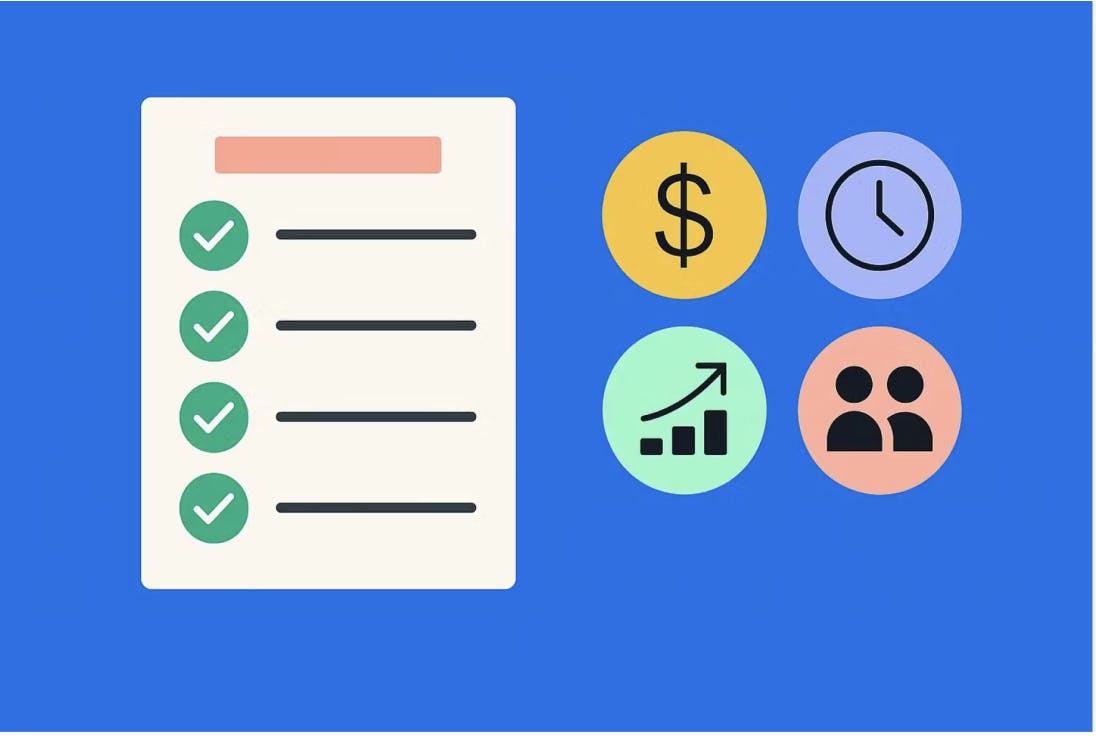
As teams move into vendor outreach and response management, Responsive Content Library and AI Assistant change how quickly and accurately proposals get built. AI Assistant draws from approved language to suggest high-confidence answers, speeding up content creation while maintaining consistency across bids. Meanwhile, the Content Library acts as a single source of truth, housing previously vetted security language, pricing terms, and product documentation. These tools accelerate cycle times while improving quality and compliance, reducing the manual overhead typically associated with vendor interactions.
Beyond document creation, Responsive collaboration features help cross-functional teams stay aligned without disrupting existing workflows. The platform integrates with tools like Slack, Microsoft Word, Google Docs, and Salesforce, making it easy for stakeholders to contribute from wherever they already work. Legal teams can redline contracts directly in-platform, IT and security reviewers can add comments or approvals with full version history, and procurement leads retain visibility across every project, whether it's a small software renewal or a large-scale system evaluation. The result: faster sourcing, stronger decisions, and a better return on every technology investment.
